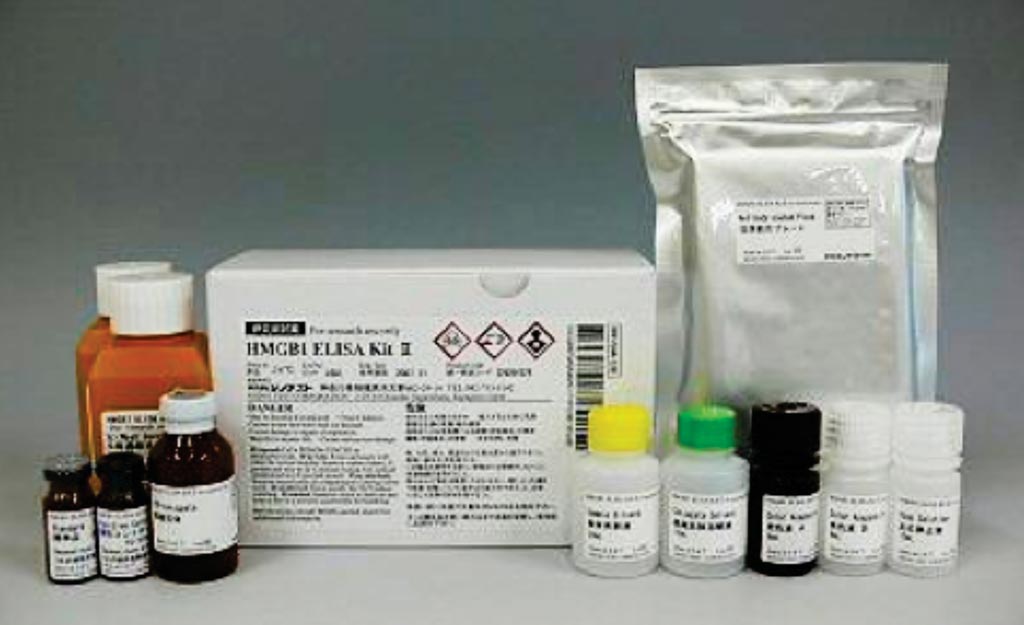Serum HMGB1 Levels Reflect Clinical Features of HLH
By LabMedica International staff writers
Posted on 17 Sep 2019
Hemophagocytic lymphohistiocytosis (HLH) is a life-threatening hyperinflammatory syndrome. Hypercytokinemia secreted from dysregulated hyperactivated monocytes, macrophages, T cells and NK cells has been reported to play a major role in HLH.Posted on 17 Sep 2019
High mobility group box protein 1 (HMGB1) is a nonhistone nuclear protein that has a dual function. Inside the cell, HMGB1 binds DNA, regulating transcription and determining chromosomal architecture. HMGB1 can be released actively from innate immune cells in response to pathogenic products and passively from injured or dying cells.

Image: The High Mobility Group Box protein 1 (HMGB1) quantitative enzyme-linked immunosorbent assay kit (Photo courtesy of Shino-Test Corporation).
Scientists at the Wakayama Medical University (Wakayama City, Japan) measured serum HMGB1 levels in 28 patients with HLH and six normal controls using a quantitative immunoassay. The patients were 21 boys and seven girls, aged from 10 days to 21 years, with a median age of 8.5 years. The underlying conditions of HLH were infection-associated HLH in 18 patients, malignancy-associated HLH in seven patients, and genetic HLH in three patients. The relations between serum HMGB1 levels and clinical symptoms and laboratory parameters were analyzed.
Blood samples were collected from the patients at the time of diagnosis of HLH and before specific treatment for HLH. Serial serum HMGB1 levels were measured in one patient. Whole blood collected in non-heparinized tubes was left to clot at room temperature for 30 minutes before centrifugation at 3,000 rpm for 15 minutes. The serum fractions were stored at −80 °C until the time of assay. Serum HMGB1 concentrations were determined using a quantitative enzyme-linked immunosorbent assay.
The scientists reported that serum HMGB1 levels were significantly higher in patients with HLH than in normal controls (median, 6.5 ng/mL). The serial serum HMGB1 levels in one patient fell to reflect the disease activity. Serum HMGB1 levels were significantly higher in patients with disseminated intravascular coagulation (DIC) than in patients without DIC and were also significantly higher in patients with central nervous system (CNS) complications than in patients without CNS complications. Serum HMGB1 levels were positively correlated with aspartate aminotransferase and negatively correlated with fibrinogen and hemoglobin.
The authors concluded that their study showed that serum HMGB1 levels reflect clinical features of childhood HLH. HMGB1 is a potential mediator involved in the pathogenesis and determining the clinical findings of HLH. The study was published on August 27, 2019, in the Journal of Blood Medicine.
Related Links:
Wakayama Medical University













